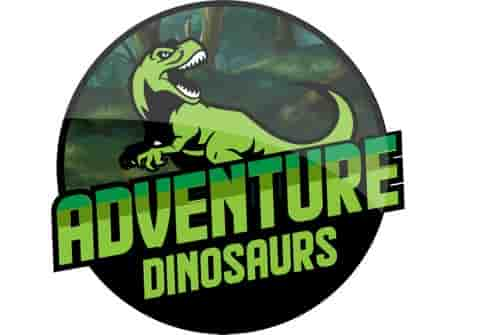Key Takeaways
- Paleontologists work in academic institutions and museums/galleries, where they serve as faculty members, conduct research, teach courses, mentor students, publish findings, curate exhibits, and design educational programs.
- They also curate exhibits and play a crucial role in public education, synthesizing scientific expertise with creative presentation, facilitating educational programs, and designing informative displays.
- Paleontologists engage in field research, uncovering fossils in remote dig locations, using excavation tools, preserving specimens, and contributing to our understanding of Earth’s history.
- They have responsibilities within government agencies and the oil and gas industry, conducting on-site investigations, collecting data, interpreting fossilized samples, sharing findings, and contributing to geological surveys and industry publications. They also help predict hydrocarbon reservoirs and reduce drilling risk.
Imagine your daily task is to find dinosaur fossils, and then once they are located, to extract them from the rock quarry without breaking and transport them to your laboratory or museum. Once there, you need to accurately identify the fossils and describe in detail how this dinosaur lived. With so many tasks to do, it’s interesting to ponder, where do paleontologists work?

Where Do Paleontologists Work?
So, where do paleontologists work? Many work out in the field, digging up fossils in remote locations in the USA, China, Mongolia, and Argentina to find fossils. They also work in universities, offices, museums, or laboratories to analyze and organize fossil research. Among other things, paleontologists use digging tools, such as cramps, chisels, stone hammers, spatulas, protective goggles, and helmets. Residues of soil are removed with brushes.
Every fossil discovery is unique and has the potential for those curious to learn something. The rich data on fossils that paleontology reveals to us, tell us the fantastic and a complex story of evolution and extinction.
Paleontology is the science of the development of life on earth, ancient plants and animals based on fossils, testimonies of their existence preserved in the rocks. Fossil remains undoubtedly give a unique basis for the evolution of the living world.
Although today animals are fascinating, animals in the past were often bigger, stronger, and far stranger. Paleontology opens a window to discover the amazing details of dinosaurs and how they lived through scientific examination.
Key Places Where Work Takes Place For A Paleontologist
Nearly 90% of paleontologists find themselves exploring the past within academic and research settings. As you dive into the world of paleontologists, you’ll find they’re not just confined to dusty digs and remote field sites.

Many work at universities, where they juggle teaching with their research, striving to uncover the Earth’s prehistoric secrets. Others curate awe-inspiring collections in museums, sharing knowledge with curious visitors.
You might also find them collaborating with government agencies to survey land and assess geological formations. Even the oil and gas industry benefits from their expertise, as they analyze ancient rock layers to predict where resources lie.
Academic Institutions
You’ll find many paleontologists working at academic institutions, where they serve as faculty members in geology departments. Within these research institutions, they engage in a trifold professional role: they conduct scholarly research, teach undergraduate and graduate courses, and provide mentorship to students pursuing careers in paleontology. These institutions are fertile grounds for paleontologists to advance their academic inquiries, often facilitating collaborative studies that contribute to the broader scientific understanding of Earth’s prehistoric life.
The environment at these academic settings allows for a synergistic interplay between teaching and research. As scholars, paleontologists are expected to publish their findings in peer-reviewed journals, thereby bolstering the institution’s scholastic reputation and contributing to the cumulative knowledge within the field. Furthermore, professional organizations such as the Paleontological Association and Paleontological Society offer essential platforms for these academics to access specialized publications and development resources, amplifying their capacity to stay at the forefront of their discipline.
Your role as a paleontologist in an academic context isn’t only to unearth past biological phenomena but also to shape future generations of scientists. Through rigorous research and dedicated mentorship, you contribute significantly to perpetuating the cycle of knowledge and discovery within the paleontological community.
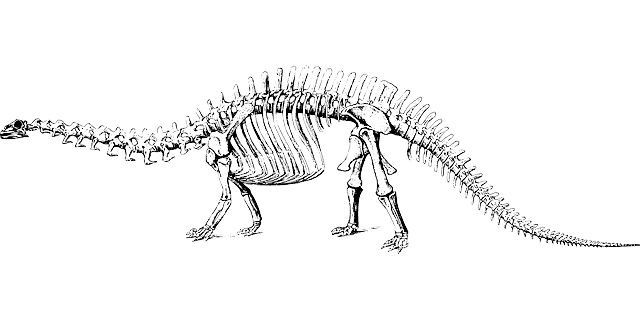
Museums and Galleries
In your role as a paleontologist, you may find yourself at the helm of exhibit curation in museums and galleries, where your expertise ensures the accurate presentation of prehistoric life.
Your responsibilities extend beyond preservation, involving the design and implementation of educational programs that cater to a diverse audience, sparking curiosity and understanding.
These settings offer a unique platform for public education, allowing you to distill complex research into accessible knowledge that both informs and captivates visitors.
Exhibit Curation
As a paleontologist working in museums and galleries, you’re tasked with the meticulous curation of exhibits that bring prehistoric eras to life for visitors. Your role in exhibit curation involves a synthesis of scientific expertise and creative presentation.
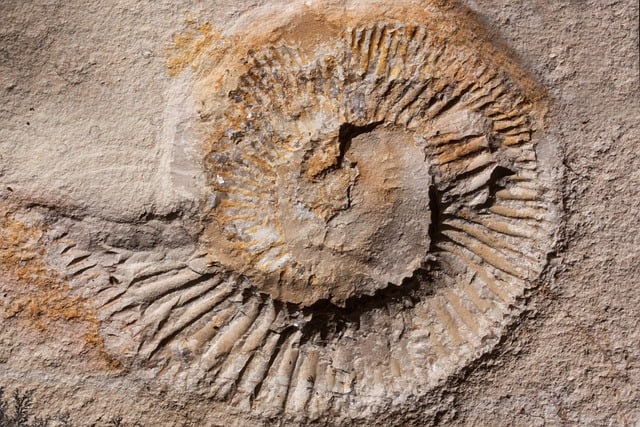
Collaborating with museum staff, you design exhibits that not only showcase fossils but also contextualize them within the fabric of paleontological significance. It’s your responsibility to ensure the information’s accuracy and authenticity, upholding scholarly standards while making the ancient world accessible.
Through your efforts, you facilitate educational programs and dynamic events, fostering a deeper public understanding of paleontology. Your contributions in exhibit curation are pivotal in bridging the gap between scientific discovery and public engagement.
Public Education Roles
Within museums and galleries, you’ll find paleontologists dedicating their expertise to educating the public about the ancient past. These professionals engage in public education roles that are pivotal for sharing knowledge and igniting interest in paleontology. They not only conduct research but also translate complex scientific findings into accessible information through various forms of outreach.
| Aspect | Role in Public Education |
|---|---|
| Exhibit Development | Designing informative displays |
| Educational Programs | Conducting workshops and guided tours |
| Research Dissemination | Writing for museum publications |
Field Work – An Important Part of Where Do Paleontologists Work
Paleontology works to recover fossils and provide answers to how dinosaurs lived long ago — it’s not to revive dead animals, but to use scientific methods to gain the best possible insight into what they were those animals. They want to find out how they fit into their world, and why that world was different from today.
Working in the field can have its challenges. For instance, remote locations in rock quarries in Montana, the Kem Kem beds in Morocco, or the various fossil sites in Mongolia are not the most accessible places to travel to and from. Additionally, there can be logistics difficulties once the fossil is ready to be transported back to the museum or laboratory.
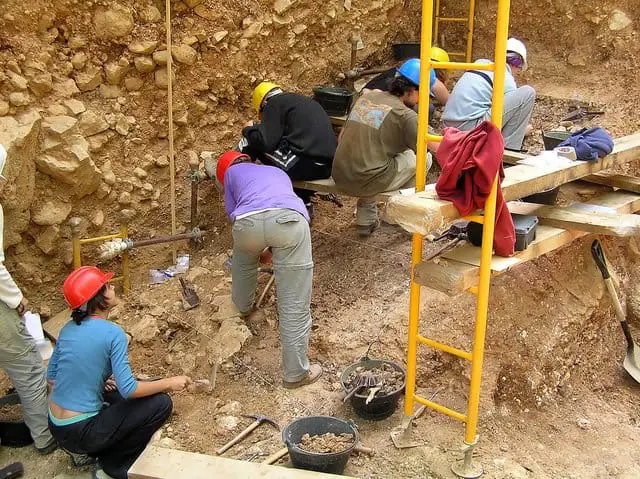
It is important to note that the original fossils found in nature do not look like most replicas in museums that are made of light materials and decorated. Fossils are difficult to distinguish from the rocks which they have been buried for millions of years. Therefore, for scientific study, it is necessary to extract them from the sediments, which is a difficult and time-consuming (sometimes impossible) laboratory process.
Paleontologists work on-site where there are potential fossil discoveries. However, the field is only one place where they work as they need to take fossils to laboratories for working to preserve the found fossils. These labs can be in universities or in natural history museums around the world. In these museums, they are studied, displayed, and create documents on the development of the Earth and man as works of nature.
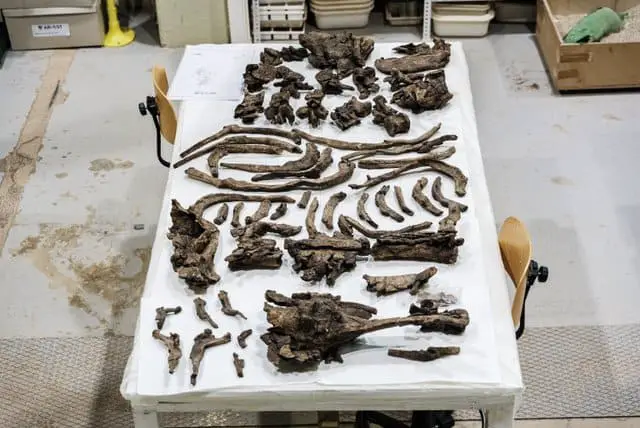
Field Research Sites
As you venture into remote dig locations, you’re tasked with uncovering fossils within rich geological formations that provide a window into prehistoric life.
You’ll employ a suite of excavation tools and techniques, ensuring the integrity of specimens while navigating the complexities of in-situ preservation.
Your work at these field research sites not only demands physical endurance but also an astute application of scientific methods to extract and document these natural archives.
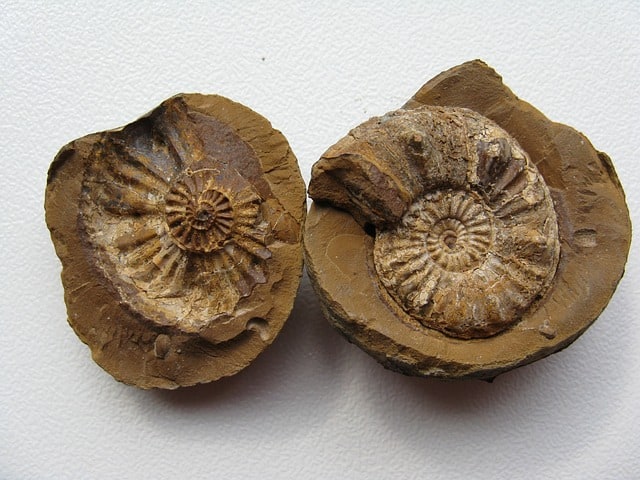
Remote Dig Locations
While you may imagine paleontologists dusting off dinosaur bones in a museum, they often find themselves in remote dig locations, braving the elements to uncover the past. These sites present unique challenges and opportunities:
- Logistics and Planning
- Transportation of equipment and personnel
- Necessity for self-sufficiency
- Advanced preparation for extended stays
- Harsh Environmental Conditions
- Extreme temperatures and weather
- Lack of infrastructure and amenities
- Adaptation to isolated settings
- Safety and Health Concerns
- Distance from immediate medical assistance
- Potential hazards within the site
- Importance of emergency response plans
Despite the difficulties, these remote dig locations are crucial for significant paleontological discoveries, offering a window into the prehistoric world and contributing to our understanding of Earth’s history.
Fossil-rich Formations
If you’re venturing into the world of paleontology, you’ll find that fossil-rich formations are more than just outdoor workspaces; they’re the living laboratories where prehistoric life is pieced together through fieldwork and analysis. These sites provide critical insights, allowing for the meticulous documentation of strata and the precise excavation of fossils.
In these natural archives, you’re tasked with planning, directing, and executing fieldwork with scientific rigor. Using advanced chemical techniques, you analyze fossilized samples directly within these formations, extracting data essential to understanding ancient ecosystems.
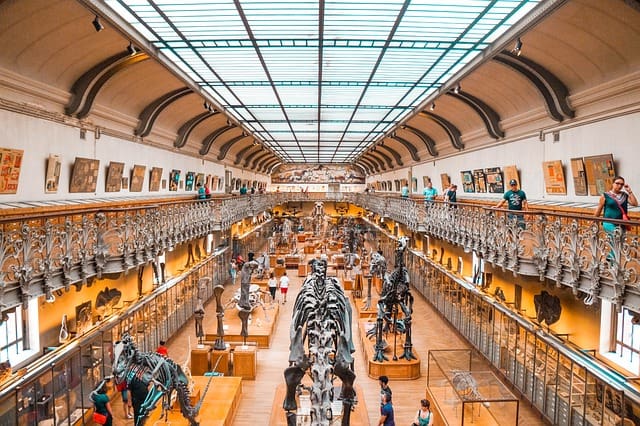
Furthermore, fossil-rich formations are integral to the preservation process, as they’re where you prepare specimens, protecting them for transport to research institutions. Each formation offers a unique window into Earth’s deep past.
For a paleontologist working in the field, it is important whether only one sample or more of them have found, then in what position and how much they have been preserved. This, among other things, testifies to whether the found specimens lived there or brought by water, whether they died en masse or not.
To make fossils actual museum exhibits, to enter the museum and its collections and to be able to take on various tasks in the museum communication, pass scientific-research procedure performed in part by paleontologists.
By studying fossils in specially equipped laboratories, paleontologists can assess how the dinosaur built, whether he stood on two legs, or is walked on all fours. Paleontologists can estimate how the animal kept its body as it walked or running. Estimating where the brain, eyeballs, teeth, spine, muscle indentations, and bony ridges to which attach muscles, say something significant about the animal being studied.
Government Agencies
As a paleontologist employed by government agencies, you’re often tasked with conducting crucial fieldwork and research that informs public understanding of Earth’s history. Your role is critical in contributing to the knowledge base of government geological surveys. These agencies provide the infrastructure and support for your work, which ranges from in-depth analysis of fossilized samples to meticulous documentation of sites.
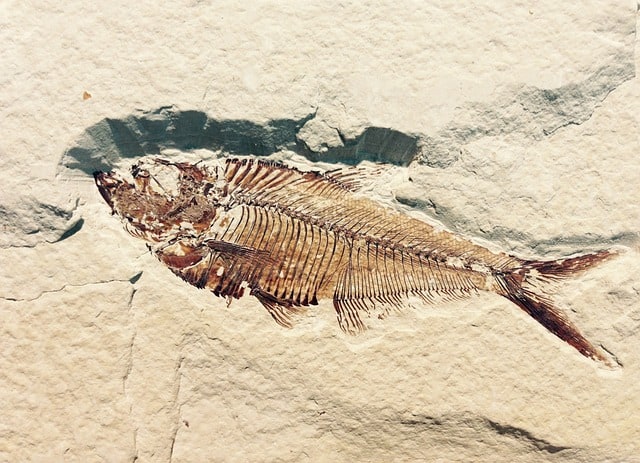
Your scholarly endeavors are not confined to the field or the lab. You’re also responsible for preserving specimens and ensuring their safe transport to various institutions where they can be further studied or displayed. The table below illustrates the breadth of your responsibilities within government agencies:
| Function | Description |
|---|---|
| Fieldwork | Conducting on-site investigations and collecting paleontological data. |
| Analysis | Examining fossilized samples and interpreting them within a broader context. |
| Preservation | Ensuring the integrity of specimens for transport and future study. |
| Dissemination | Sharing findings through scholarly articles and conference presentations. |
Oil and Gas Industry
Transitioning from government agencies to the oil and gas sector, you’ll find paleontologists play a pivotal role in exploring potential fossil sites that could indicate the presence of natural resources. These professionals are integral to oil companies, offering insights that directly impact the exploration and extraction processes.
Paleontologists in this industry specialize in:
- Excavation and Sample Collection
- Conducting fieldwork at oil company sites
- Uncovering fossils or ancient organic material
- Collecting samples for further analysis
- Laboratory Analysis
- Performing tests on collected samples for identification
- Utilizing specialized techniques to date and characterize specimens
- Interpreting data to inform on past geological environments
- Collaborative Insight Sharing
- Comparing findings with industry colleagues
- Contributing to scientific publications
- Presenting research in educational and professional settings
Your analytical skills, attention to detail, and scholarly approach enable you to decipher the earth’s past, a task vital for identifying potential hydrocarbon reservoirs. The expertise you bring to oil companies is crucial; understanding the distribution of ancient life forms and their environments helps predict where oil and gas deposits might be found, thereby reducing financial risk and increasing the efficiency of drilling operations.
Environmental Consultancies
While you may be familiar with the role of paleontologists in the oil and gas industry, in environmental consultancies, they’re essential for assessing the impact of development on our planet’s ancient past. In this capacity, paleontologists are at the forefront of blending historical data with contemporary environmental considerations. Their expertise becomes indispensable when it comes to locating fossil sites and evaluating how land use changes affect these irreplaceable resources.
As part of environmental consultancies, paleontologists engage in meticulous excavations and rigorous sample collection, often preempting large-scale construction projects or extensive land development plans. They scrutinize fossilized remains to understand the biological and geological history of the area, informing the environmental impact assessments that are critical for regulatory compliance.
Their analysis goes beyond mere identification; it encompasses a comprehensive evaluation of potential environmental impacts and considers the long-term implications of development. The recommendations they provide aim to manage and mitigate environmental risks, thereby ensuring that development projects proceed without compromising the integrity of paleontological resources.
Moreover, paleontologists in environmental consultancies contribute to the body of scientific knowledge by publishing their research findings. They articulate the significance of their discoveries through environmental impact reports, thereby educating stakeholders and guiding policy decisions with evidence-based insights.
Science Communication Roles
You’ll find paleontologists stepping beyond fieldwork and analysis to embrace roles as science communicators, effectively bridging the gap between complex research and public understanding. As a paleontologist, you’re not just uncovering the past; you’re also tasked with conveying your findings to a diverse audience. This critical facet of your work ensures that the insights gleaned from ancient life contribute to contemporary knowledge and education.
Professional organizations play a pivotal role in supporting paleontologists in their science communication efforts. These organizations provide access to journals, offering platforms for publishing and accessing cutting-edge research. Additionally, they organize conferences and symposia, which provide opportunities to present findings and network with peers. Professional organizations also facilitate workshops and seminars geared towards enhancing communication skills through professional development.
In your quest to excel in science communication, you’ll likely contribute to peer-reviewed journals, ensuring that your research is rigorously vetted and disseminated within the scientific community. Meanwhile, opportunities at universities, museums, and educational institutes will allow you to translate your work for students and the public, fostering a wider appreciation for paleontological research. In this analytical, detail-oriented role, you’ll be tasked with crafting narratives that are both accurate and engaging, tailored to an audience that craves comprehension without oversimplification.
Construction Project Collaboration
As a paleontologist, your expertise becomes invaluable when construction projects unearth potential fossil sites, necessitating careful collaboration to preserve these prehistoric treasures. Your role involves more than just excavation; you must work hand-in-hand with construction teams, ensuring that the preservation of history is balanced with modern development needs.
Your analytical skills aid in developing comprehensive environmental impact assessments, underpinning the creation of mitigation plans that both protect paleontological finds and facilitate construction progress. This collaboration often requires meticulous planning and a deep understanding of the construction process, as well as the paleontological significance of the site.
Educational outreach is another critical aspect of your collaboration with construction teams. By engaging in dialogue and sharing your knowledge, you help foster a respect for paleontological resources among those who may first encounter them. Below is a table summarizing key aspects of construction project collaboration:
| Construction Phase | Paleontologist’s Role |
|---|---|
| Pre-construction | Assessing potential fossil locations |
| During construction | Guiding preservation and excavation efforts |
| Post-construction | Analyzing and documenting discoveries |
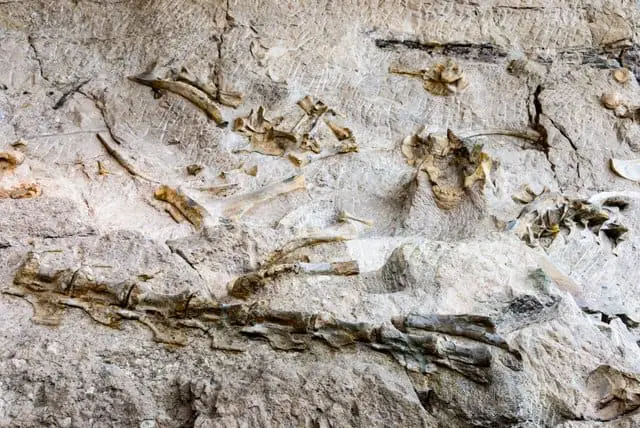
————————————————————————————————
Related Dinosaur Fossil Articles You Might Also Be Interested In:
Can You Buy and Own a Dinosaur Bone? The Law vs the Science
How Much Would A Real Dinosaur Egg Be Worth
Learn How Dinosaur Eggs Are Fossilized And Identified
————————————————————————————————
What Do Paleontologists Do When They Find a Fossil?
After a paleontologist finds a fossil, it can be an exciting time, but it also is when a lot of the work starts. Each fossil represents a series of incomplete clues, similar to those Detective Sherlock Holmes encounters when he arrives at a crime scene. Hence, paleontology has a lot in common with forensics.
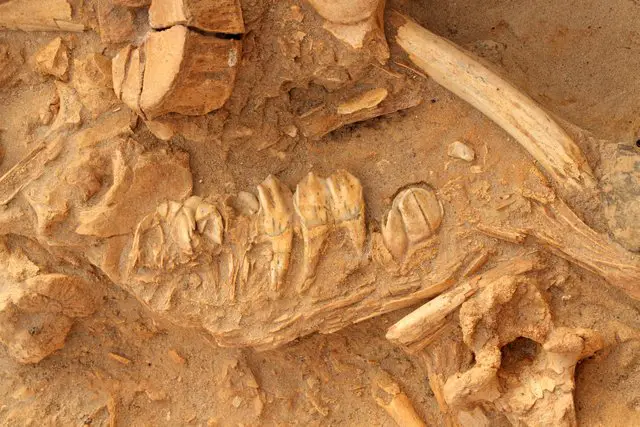
Already based on the first observations and clues, several questions arise:
● What kind of animal was that while it was alive?
● How long ago did it die?
● Did it die at the place where it found?
● Was it male or female?
● What did that animal look like while it was alive?
● Was it moving fast or slow?
● What did it eat?
● Did it have sharp eyesight, hearing, and smell?
● Was it capable of complex behavior?
● Is it related to any animal that lives today?
What Tools Are Needed? What Are Some of the Surprising Tools?
As excavation work progresses, hand tools are increasingly being used as well, which are chisels, hammers, brushes, and a needle can used for the removal of individual grains of sand. Protective goggles are preferred, as well as helmets, in case of falling rocks from nearby cliffs.
Tools like chisels and hammers are quite logical, but what are some of the unusual tools that paleontologists use? For cleaning fossils or clearing the sand away from a specific fossil bone, an air compressor is used.
Excavation work can involve many different processes and each of these processes requires their own tools. Below is a table of the types of tools paleontologists use as well as a general description and purpose for its use.
Table 1 - Tools Paleontologists Use
| Type of Tool | Description of Tool | What Is It Used For? |
|---|---|---|
| Chisels, Hammers, Brushes | Small -Mid- Large sized hand tools that can break rocks into smaller pieces and clean | Separating and cleaning fossils from rock |
| Jigsaw, bench vice, drill press hand tools | Equipment hand tools that are often used for woodworking. | Holding, cutting and drilling rock away from fossils |
| Pneumatic scribing tools | These tools are powered by air. Comes in different sizes and and for different uses | Air powered tools that are used for blasting away sand, dirt and rock from fossils |
| Air Compressors | Air compressors are to be used with pneumatic tools. The come in diferent sizes for matching with tool requirements | Used for supplying the air for the pneumatic tools |
| Drills and Micro-Drills | Different sized drill bits as well as drill bits made out of harder substances, for instance hardened steel or diamond tips | Drills are used for separating, cleaning and drilling through rocks attached to fossils |
| Vacuum Chamber | Equipment used during the casting process designed to keep out air and a certain temperature | For the casting process, this equipment helps to make the cast |
| Vacuum Pump | A pump to work with the vacuum chamber. It pumps the air out of the chamber | Used for the casting process to pump the vacuum chamber |
| Type of Tool | Description of Tool | What Is It Used For? |
Various methods and tools are used to clean fossils from unwanted parts and protective plaster: from pneumatic chisels, a thin jet of gas, and a fine powder for etching, all the way to powerful microscopes for cleaning the most sensitive areas. Also, paleontologists use high-speed diamond drills, similar to those which dentists use.
Excavation Tools, Techniques
You’ll often find that the success of unearthing fossils at these sites hinges on the proper use of specialized excavation tools and techniques. These tools and techniques aren’t only about digging out the past; they embody a rigorous scientific approach:
- Excavation Tools:
- Delicate Brushes: For removing fine sediment without damaging the fossil.
- Chisels and Pickaxes: To carefully chip away the surrounding rock.
- Shovels: For bulk sediment removal around the find.
- Techniques:
- Grid System Excavation: To meticulously record the location of each find.
- Stratigraphic Mapping: To understand the layers of sediment and their historical sequence.
- Field Research Sites:
- Sedimentary Rock Formations: Prime locations due to their fossil-preserving qualities.
- Remote Terrains: Where specialized gear is necessary for access and excavation.
Sometimes the bones are small and sensitive, so they are left in the stone block, to be later in the museum laboratories were separated under controlled conditions.
Big bones are a unique problem and must be handled with care. Their weight makes them sensitive to breakage and crushing. First, just over half the bones, it is released from the surrounding rock. Then soft paper or linen is spread over exposed surfaces. After that, the linen cloth is dipped in gypsum mortar used for coating surfaces. When the gypsum hardens, the fossil is ready for transport to the museum.
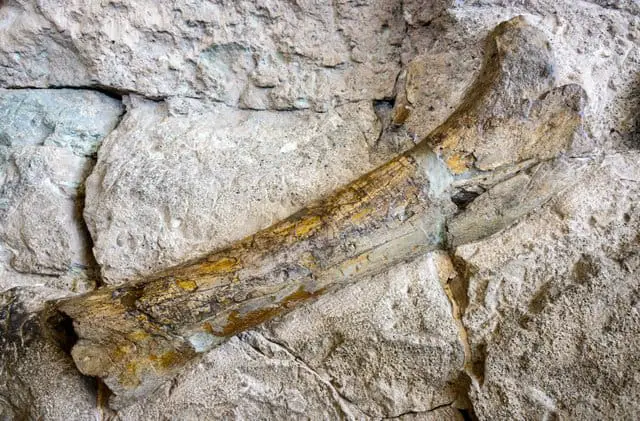
Once all the fossils cleared and collect, the next phase begins. Assembling prepared fossils into an upright skeleton of a dinosaur, or another animal represents a true engineering endeavor.
Parting Shot
Today, everyone knows about dinosaurs. Part of the general culture and primary education is the fact that giant reptiles once walked the Earth, their size-dimensions were unbelievable and awe-inspiring. They used to be the masters of everything that lived on the planet Earth, and they proudly kept their place at the top of the food chain.
Although most of us owe the notion of dinosaurs to popular Hollywood movies, it is unlikely that our knowledge would be so complete without the help of the knowledge and discoveries provided by paleontology. I’ve covered in this article some of the locations where do paleontologists work and as mentioned, searching for fossils in the field is just the first step to understanding what has been found.
Thanks to the hard work of paleontologists and their magnificent discoveries, both adults and very young children got to know dinosaurs. These creatures disappeared from the face of the Earth 66 million years ago.
Frequently Asked Questions
Where Do Paleontologist Usually Work?
You’re like a time-traveler, uncovering Earth’s past at field sites, museums, and universities, meticulously piecing together ancient puzzles while splitting time between dusty digs and scholarly sanctums to quench humanity’s thirst for knowledge.
What Is the Work Environment for a Paleontologist?
As a paleontologist, you’ll experience a dynamic work environment that involves meticulous field exploration, coupled with detailed laboratory analysis, reflecting a scholarly dedication required to understand Earth’s prehistoric life.
Is Paleontology a Good Paying Job?
You’ll find paleontology’s salary prospects range widely, with a median around $83,780. Higher degrees bolster earnings, but remember, factors like employer type and experience level significantly influence your potential income.
Do Paleontologists Work in a Lab?
You’re curious if paleontologists work in a lab, right? They certainly do, alongside their field research, meticulously analyzing fossils and ancient pollen to advance our understanding of prehistoric life.
